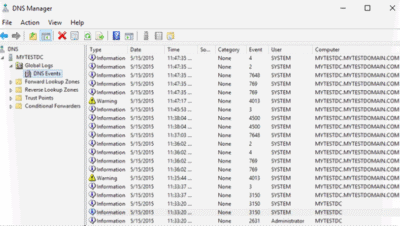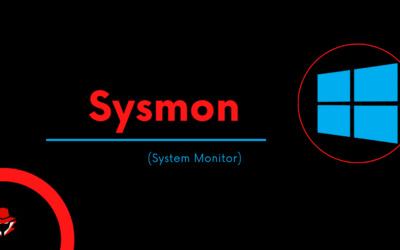Got it, let’s dive deeper into the technical aspects of PCAP analysis for network-based attacks.
From PCAP to RCA: A Technical Deep Dive into Network Attack Storytelling
Understanding the intricate details of a network-based attack requires a meticulous examination of Packet Captures (PCAPs). This deeper dive will explore advanced techniques for Command-and-Control (C2) detection, Indicator of Compromise (IOC) extraction, and the precise reconstruction of an attacker’s timeline, culminating in a robust Root Cause Analysis (RCA).
The PCAP: Forensic Gold Mine 🕵️♀️
A PCAP is a raw, unadulterated record of network traffic. Each packet within the capture contains layers of information, from the physical layer (MAC addresses) to the application layer (HTTP requests, SMB commands). For forensic analysis, this multi-layered data provides the definitive truth of network communications.
Tools of the Trade:
- Wireshark: The quintessential GUI tool for deep packet inspection. Its powerful display filters, protocol dissectors, and “Follow TCP Stream” functionality are indispensable.
- TShark: The command-line version of Wireshark, ideal for scripting and large-scale automated analysis.
- Zeek (formerly Bro): A network security monitor that performs stateful protocol analysis, generating highly detailed logs (connection logs, DNS logs, HTTP logs, etc.) that summarize network activity. This is invaluable for high-level pattern detection before diving into raw PCAPs.
- NetworkMiner: Extracts artifacts like files, images, credentials, and certificates directly from PCAPs.
- CapLoader: Designed for quickly navigating and filtering large PCAP files.
Advanced C2 Detection Techniques 📡
Beyond basic port and protocol analysis, identifying sophisticated C2 channels requires a deeper understanding of attacker methodologies.
1. Statistical Analysis and Anomaly Detection:
- Beaconing Detection: Look for periodic, fixed-interval connections from internal hosts to external IPs. While Wireshark can visualize this, tools like Zeek’s conn.log can be programmatically analyzed for consistent inter-arrival times of connections to external destinations.
- Example (Zeek): Filter
conn.logfor connections to external IPs and analyzets(timestamp) fields for fixed-interval differences.
- Example (Zeek): Filter
- Jitter Analysis: Advanced C2 frameworks introduce random jitter to beacon intervals to evade detection. While harder to spot manually, statistical methods (e.g., standard deviation of inter-arrival times) can sometimes reveal this.
- Data Volume Analysis: C2 channels often involve low-volume data transfers (commands) followed by potentially larger bursts (exfiltration). Graphing data sent/received over time for specific connections can highlight these patterns.
- Flow Entropy: Analyzing the entropy of data within flows can sometimes indicate encrypted or obfuscated C2 traffic. High entropy could suggest encrypted data, while low entropy might point to highly repetitive or unencrypted protocol traffic.
2. Protocol-Specific C2 Obfuscation:
- DNS Tunneling: Attackers encapsulate C2 commands and data within DNS queries and responses.
- Detection: Look for unusually long DNS query names, repeated queries to the same non-existent subdomains, or large amounts of data in DNS responses (
TXTrecords are commonly abused). - Wireshark Filter:
dns.qry.name contains ".maliciousdomain.com"or analyze thednsprotocol statistics. - Zeek:
dns.logwill record all DNS queries and responses, making it easy to spot anomalies.
- Detection: Look for unusually long DNS query names, repeated queries to the same non-existent subdomains, or large amounts of data in DNS responses (
- HTTP/HTTPS C2: Masquerading C2 as legitimate web traffic.
- Detection:
- Unusual User-Agents: Custom or outdated user-agent strings.
- Non-Standard Headers: Custom HTTP headers used for C2 communication.
- GET/POST Request Anomalies: Excessive
GETrequests with data in the URL parameters, orPOSTrequests with small, encrypted payloads. - Jitter in Request Times: Similar to beaconing, but within HTTP requests.
- SSL Certificate Anomalies (for HTTPS): Self-signed certificates, expired certificates, or certificates issued for unrelated domains are strong indicators.
- Wireshark Filter:
http.request.method == GET && http.request.uri contains "cmd="orssl.handshake.type == 1(Client Hello) followed byssl.handshake.certificatefor certificate inspection. - Zeek:
http.logprovides detailed HTTP request/response data,ssl.logfor certificate information.
- Detection:
- ICMP Tunneling: Using ICMP echo requests/replies to tunnel data.
- Detection: Large ICMP packet sizes, unusual data patterns within ICMP payload, or an excessive number of ICMP packets between specific hosts.
- Wireshark Filter:
icmp.data.len > 0oricmp.type == 8 && icmp.code == 0 && icmp.data.len > 100(looking for data in ping requests).
3. YARA Rules and Signature Matching:
For known C2 frameworks, YARA rules can be developed to scan PCAPs (using tools like yarascan or custom scripts) for specific byte patterns, strings, or header values associated with the C2 protocol. This is effective for detecting previously identified threats.
Precise IOC Extraction 💉
Extracting reliable IOCs is paramount for threat intelligence and future detection.
1. Network-Based IOCs:
- IP Addresses & Domains:
- Wireshark:
Statistics > EndpointsorStatistics > Conversationsto see all communicating IPs. Right-click on an IP andApply as Filter > Selectedto isolate traffic. - TShark:
tshark -r input.pcap -q -z conv,tcpfor TCP conversations. - Zeek:
conn.logis the definitive source for all connection details, including source/destination IPs and ports.dns.logcaptures all DNS queries and their answers.
- Wireshark:
- URLs and URIs:
- Wireshark: Use
http.request.urifilter. Right-click and “Copy > Value” for specific URLs. - Zeek:
http.logprovides full URLs, user agents, and referers.
- Wireshark: Use
- SSL/TLS Certificates:
- Wireshark: Filter
ssl.handshake.type == 11(Certificate) and inspect theSubjectandIssuerfields, serial numbers, and validity dates. - Zeek:
ssl.logextracts certificate details automatically.
- Wireshark: Filter
2. Host-Based IOCs (Extracted from Network):
- File Hashes:
- Wireshark:
File > Export Objects > HTTP(or SMB, DICOM, etc.) will extract files transferred over the respective protocols. These files can then be hashed usingsha256sum,md5sum, etc. - NetworkMiner: Automates file extraction and hashing from various protocols.
- Wireshark:
- User-Agent Strings:
- Wireshark: Filter
http.user_agentand inspect values. - Zeek:
http.logincludes theuser_agentfield for every HTTP connection.
- Wireshark: Filter
- Command Line Arguments (if captured in plaintext): If an attacker uses tools that send commands in plaintext over protocols like HTTP or SMB, these can be directly extracted by following the TCP stream.
3. Behavioral IOCs:
These are patterns, rather than static values, and are often derived by analyzing large sets of network data.
- Regular Beaconing Intervals: As discussed above.
- Specific Protocol Deviations: E.g., HTTP traffic on port 443 that is not encrypted.
- Sequential DNS Queries to Non-Existent Domains: Common in DGA (Domain Generation Algorithm) malware.
Reconstructing the Attacker’s Timeline with Precision ⏰
The timeline provides the narrative flow of the attack, linking each discovered IOC and event to a specific time.
1. Establishing a Common Time Source:
Crucially, ensure all logs (PCAP, endpoint, firewall, etc.) are synchronized to a common time source (e.g., NTP). PCAP timestamps are generally reliable but need to be correlated.
2. Event Correlation and Chronological Ordering:
- Initial Access:
- PCAP Clues: Unsolicited inbound connections, traffic to known exploit kit landing pages, unusual port scans targeting perimeter systems, successful authentication attempts from unexpected sources (e.g., SSH, RDP). Look for
SYN/ACKfrom an internal host to an external malicious IP as a potential outbound connection after an initial compromise (e.g., phishing). - Wireshark: Filter by
ip.addr == [attacker_ip]and sort byTime.
- PCAP Clues: Unsolicited inbound connections, traffic to known exploit kit landing pages, unusual port scans targeting perimeter systems, successful authentication attempts from unexpected sources (e.g., SSH, RDP). Look for
- Execution & Persistence:
- PCAP Clues: Downloads of executables (HTTP, SMB),
SMBtraffic indicating creation of scheduled tasks or services,DNSqueries for C2 domains. - Wireshark:
Follow TCP Streamon HTTP or SMB to observe file transfers. Look forSMB2Create RequestorSet Infofor service creation.
- PCAP Clues: Downloads of executables (HTTP, SMB),
- Internal Reconnaissance:
- PCAP Clues: Broad internal
ARPscans,ICMPpings across subnets,Nmap-like scans (distinguished by rapid sequential port attempts),SMBenumeration (NetViewGetInfocalls),LDAPqueries to domain controllers. - Zeek:
conn.logfor port scans,smb.logfor SMB enumeration.
- PCAP Clues: Broad internal
- Lateral Movement:
- PCAP Clues: New connections originating from the initially compromised host to other internal systems, especially over
RDP(port 3389),SMB(ports 139, 445),WinRM(port 5985/5986), orSSH. Look forKerberosorNTLMauthentication attempts. - Wireshark: Filter
tcp.port == 3389 || tcp.port == 445.
- PCAP Clues: New connections originating from the initially compromised host to other internal systems, especially over
- Command and Control (C2):
- PCAP Clues: Persistent beaconing, data exfiltration (large outbound transfers over suspicious protocols), command execution within established C2 channels.
- Wireshark: Analyze
Timecolumn for periodicity in C2 flows. UseIO Graphfor visual beaconing.
- Action on Objectives:
- PCAP Clues: Large outbound
HTTP/HTTPSPOSTs,FTP/SFTPuploads, orSMBshares being accessed externally. Encryption key exchanges for ransomware. Data corruption or deletion over network protocols. - Wireshark: Sort by
Lengthcolumn, filtertcp.flags.push == 1for data transfers.
- PCAP Clues: Large outbound
3. Contextualization:
Beyond the PCAP, integrate data from:
- Firewall Logs: To validate allowed/denied connections.
- Endpoint Detection and Response (EDR) Logs: For process execution, file modifications, registry changes.
- Authentication Logs (Active Directory, VPN): To identify compromised credentials or unusual logins.
- IDS/IPS Alerts: To correlate network events with triggered security alerts.
This holistic approach allows for a comprehensive narrative of the attack, detailing each stage from initial compromise to ultimate objective.
Root Cause Analysis (RCA): Preventing Future Attacks 🛡️
The ultimate goal of PCAP analysis is to identify the root cause and implement effective preventative measures.
Key Aspects of a Technical RCA:
- Technical Vulnerability Identification:
- Software/OS Vulnerability: Was a specific CVE exploited? (e.g., EternalBlue on SMB, Log4Shell on HTTP). PCAP might show the specific exploit payload.
- Misconfiguration: Open ports, weak authentication settings, default credentials.
- Weak Security Controls: Inadequate firewall rules, missing IPS signatures, poor network segmentation.
- Attacker’s Entry Vector Validation: Confirm how the attacker initially gained access (e.g., phishing link clicked, RDP brute force, web server exploit).
- Lateral Movement Path Analysis: Understand the internal path taken by the attacker to reach high-value assets. This informs segmentation strategies.
- C2 Channel Robustness: How resilient was the C2 to detection? This informs C2 detection strategies (e.g., deploying DNS security monitoring, improving SSL inspection).
- Exfiltration Pathways: How was data exfiltrated? This informs data loss prevention (DLP) and egress filtering policies.
- Tooling and TTPs: Identify the specific tools (e.g., Mimikatz, Cobalt Strike) and Tactics, Techniques, and Procedures (TTPs) used by the attacker. This feeds into threat intelligence and defensive playbooks.
By meticulously breaking down the attack using PCAP data, security teams can move beyond mere incident response to truly understand the “why” behind the compromise, leading to robust, long-term security posture improvements. It’s about turning raw network data into actionable intelligence.



